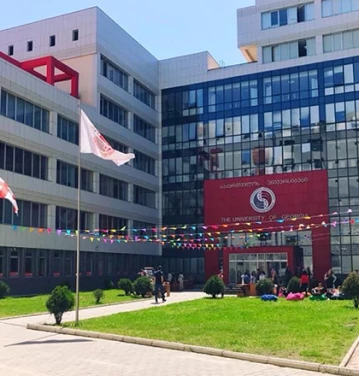Education in Georgia falls under the authority of the Georgian Ministry of Education, Science, Culture, and Sport (MOESCS), governed by laws that ensure access to general education for all individuals within the country. The system is structured in two stages, with the initial stage comprising general education provided to children in secondary schools. Students become eligible to pursue higher education at universities after completing this stage. This page aims to provide an overview of the education system in Georgia, highlighting its key features and components.

Reforming Education Policy in Georgia
Education in Georgia, a country with a long and intriguing history, has witnessed numerous changes. Notably, during the 20th century, before and after the Soviet Union era when Georgia gained independence, the education system underwent significant transformations. In the years 1918-1921, the Republic of Georgia initiated educational reforms, resulting in the establishment of the Public Education law. This led to numerous private educational institutions opening while the government ensured their adherence to the country’s legislation and the protection of teachers’ and students’ rights. During the Soviet era, the emphasis was on increasing the number of educated individuals. However, the communist ideology associated with the system was met with resistance from most Georgians. As a result, the country sought further reforms to progress in education policy, aiming for transparency and freedom from corruption.
Schools in Georgia
In Georgia, students go to school for 12 years. The first four years are called primary school, and the rest is called secondary school. After finishing secondary school, you can go to university with a diploma. School teaches you about different subjects and gives you average knowledge. In Georgia, your school grades and performance don’t matter once you reach the 12th grade. The goal is to finish the 12th grade successfully and move on to the next stage of your life. If you don’t want to attend university, you can leave after the 9th grade and start working.

Universities in Georgia
In the realm of education in Georgia, two primary categories of universities exist: teaching universities and regular universities. The distinction lies in the educational offerings, as regular universities provide a comprehensive three-stage education program, encompassing Bachelor’s degrees (4 years), Master’s degrees (2 years), and Doctoral degrees (3 years). Conversely, teaching universities focus on Bachelor’s and Master’s degrees exclusively. The vast majority of Georgian universities, approximately ninety-eight percent, are concentrated in the capital city of Tbilisi, prompting students from various regions to consider relocation if their financial means allow. Notably, a minority of universities are in other significant cities like Batumi and Kutaisi. Furthermore, all universities across the country adhere to a standardized grading system, where each subject is allocated 100 points, earned through attendance in lectures, seminars, and performance in final exams. To complete a subject, students must accumulate a minimum of 51 points.
Quality of Education
The quality of education in Georgia has been improving in recent years, with investments in infrastructure and teacher training. Georgia has participated in international assessments, such as PISA and TIMSS, with mixed results. While there have been some areas of improvement, such as in mathematics, further progress is still needed to meet global standards.
Cost of Education
The cost of education in Georgia varies depending on the level of education and the type of institution. Public schools are free of charge for Georgian citizens (and foreigners up through the high-school level), while private schools may charge tuition fees. For higher education, tuition fees can vary greatly depending on the institution and the field of study. However, compared to other countries, the cost of education in Georgia for international students is relatively affordable. Georgia offers fewer international scholarships than countries such as the US, UK, or Canada. Individual schools mainly give international scholarships; therefore, it is recommended to check their websites and send out a few emails.
Conclusion
In conclusion, education in Georgia offers a range of options for students of all ages, including primary, secondary, and higher education, as well as vocational training programs. While the quality of education is generally good, the cost of attending school may concern some families, as fewer international scholarships are available compared to other countries. However, there are still opportunities for financial aid, and students can explore these options by contacting individual schools and checking their websites. Please visit the residence by education or contact us for more information about education-related services.
Georgia offers quality education with diverse
academic opportunities for students.
Education in Georgia FAQ
Students in Georgia attend school for 12 years.
Georgia's education quality has been improving with investments in infrastructure and teacher training.
The cost of education in Georgia varies depending on the level and type of institution.
CONTACT US FOR ANY QUESTIONS
Core responsibilities of Human Resource Management

Common Types of HR Services
3box. Culture and different internal policies all have a significant impact on employee retention and engagement. This extremely important for growing businesses and start-ups. For sustainable growth, a big-picture strategy managed by HR professionals or service providers will be key.
It is necessary to develop and maintain a systematized framework to discover opportunities and enhance work performance, while ultimately contributing to the betterment and value of the entity.
Stay ahead in a rapidly changing world
The solution WP consulting came up with combined cutting edge technology with real world practicality. Everyone knew that the systems had to be updated, the real challenge was updating them without disrupting the whole organization in a negative way. The solution was to introduce proper workload management done through computers, while providing mobile platforms to the stakeholders.
This allowed the workers to be involved in the job instead of feeling like they had been made redundant by technology.

The biggest challenge was that Arguzo was not utilizing technology properly. Too much of the work was still being recorded manually, which meant that the numbers took a long time to note down and then to be analyzed. Live data was also not available and decisions can only be made after all the required data and been received. This was holding Arguzo back; they knew they could corner more of the market if they had the ability to be more mobile. The work addressed three critical issues for Pharm Ltd.:
The biggest challenge was that Arguzo was not utilizing technology properly. Too much of the work was still being recorded manually, which meant that the numbers took a long time to note down and then to be analyzed. Live data was also not available and decisions can only be made after all the required data and been received. This was holding Arguzo back; they knew they could corner more of the market if they had the ability to be more mobile. The work addressed three critical issues for Pharm Ltd.:
The biggest challenge was that Arguzo was not utilizing technology properly. Too much of the work was still being recorded manually, which meant that the numbers took a long time to note down and then to be analyzed. Live data was also not available and decisions can only be made after all the required data and been received. This was holding Arguzo back; they knew they could corner more of the market if they had the ability to be more mobile. The work addressed three critical issues for Pharm Ltd.: